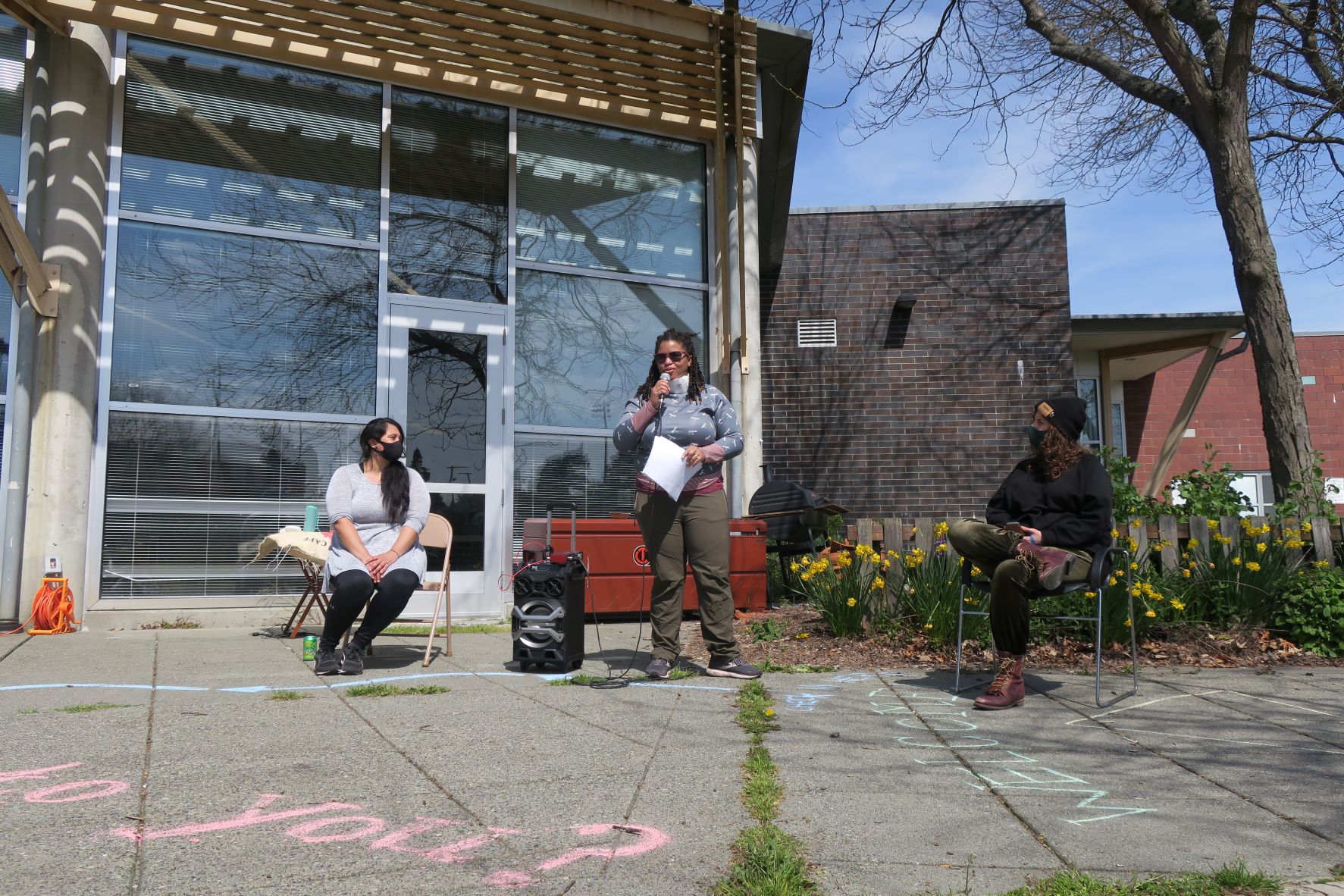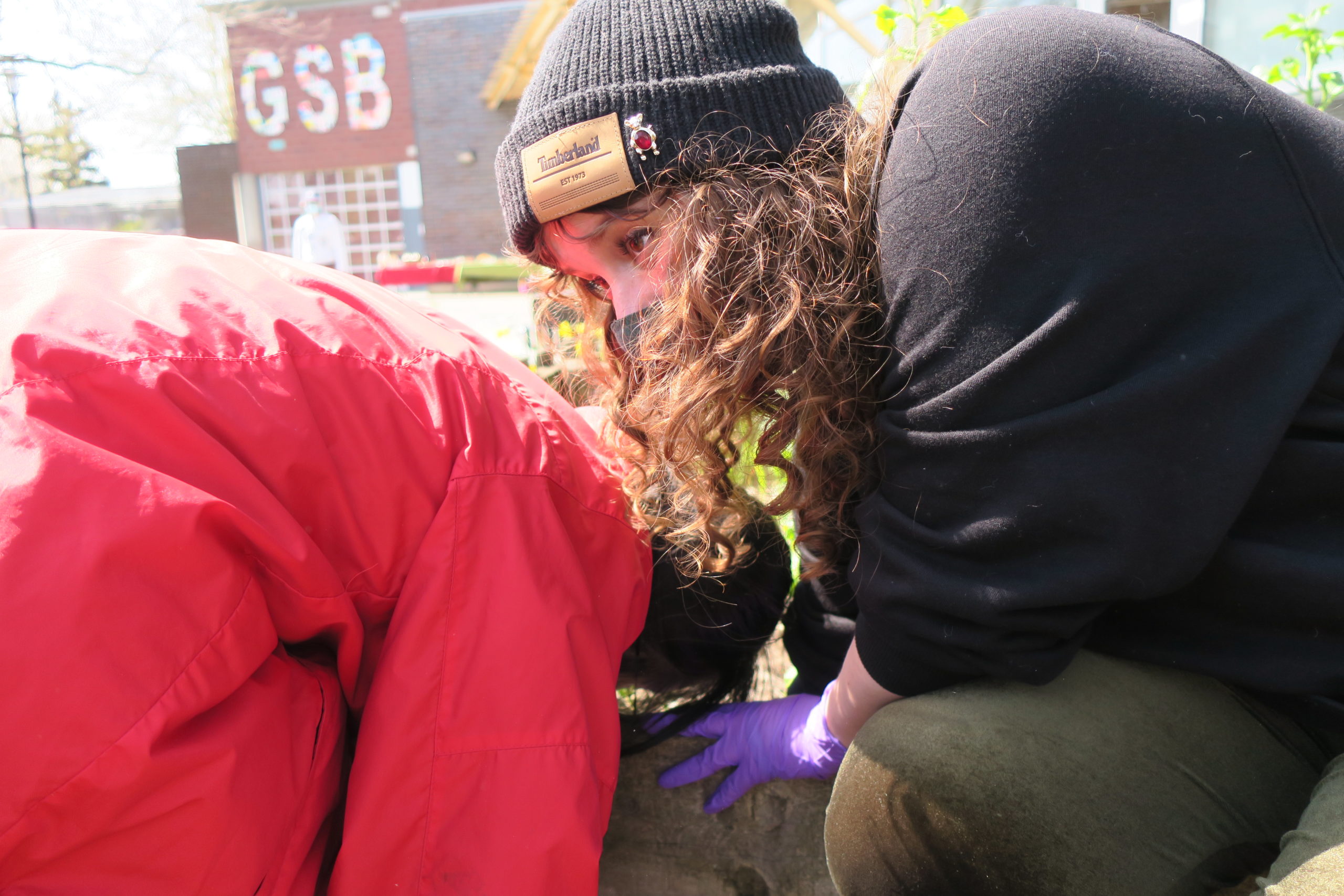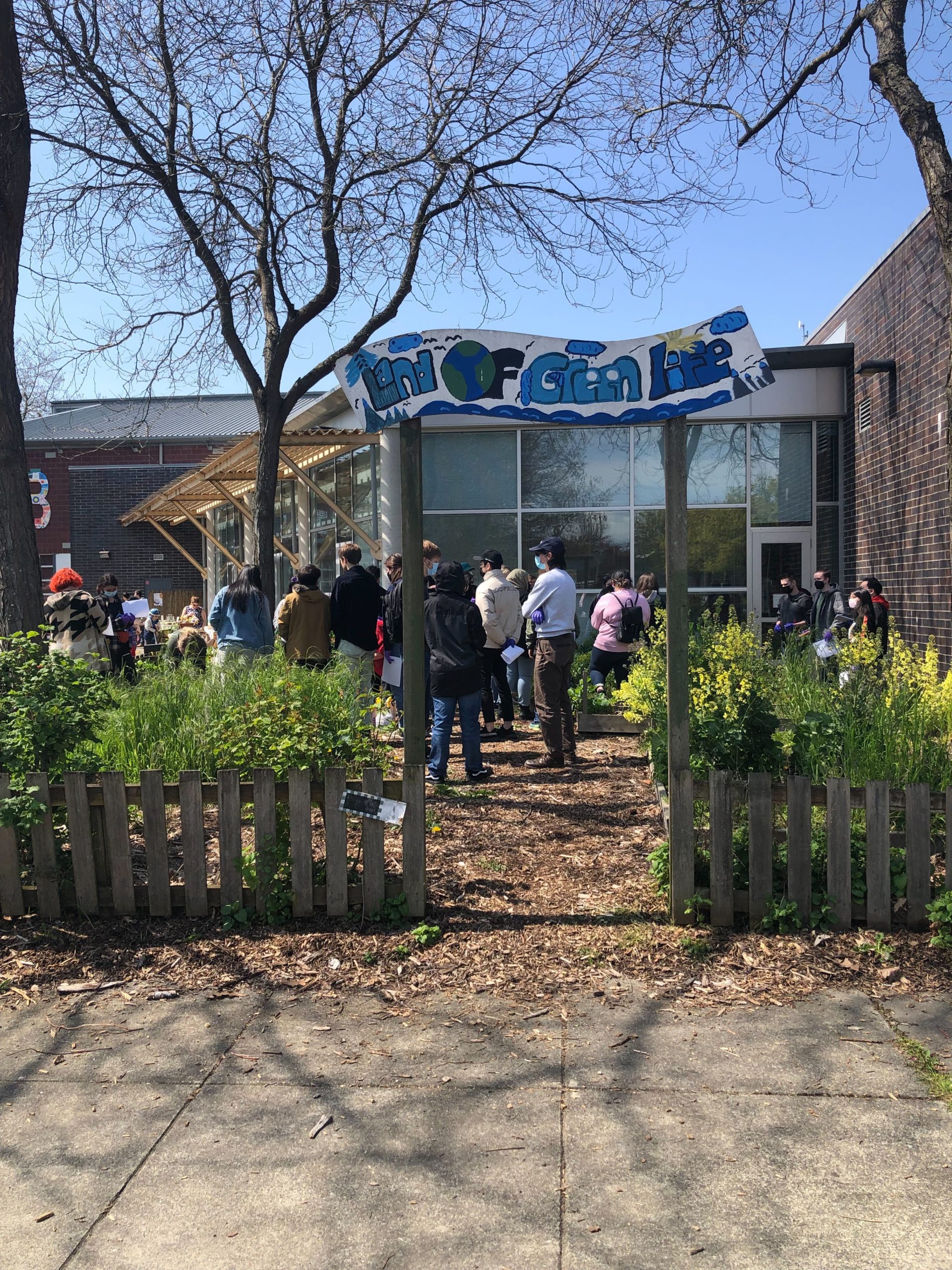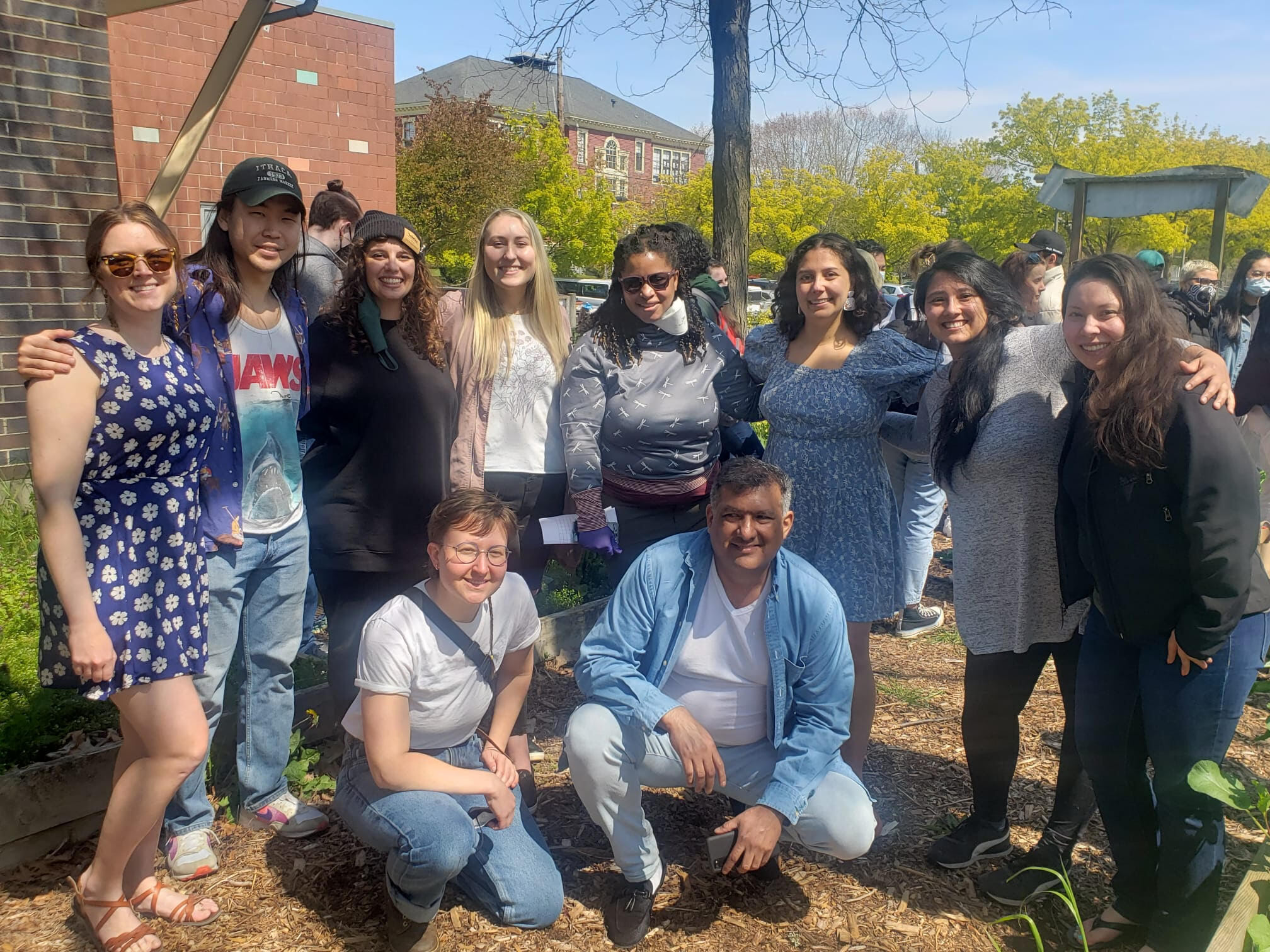We deserve clean soil.
Thank you to the nearly one hundred people who gathered this sunny Earth Day weekend. We know many more of you stayed home for the safety of yourselves and your loved ones, and thank you also for taking care of yourselves and our wider community.
This was the first event we’ve held in the past two and a half years that we did not run hybrid, due to the specific nature of the soil testing and space. However, we have heard from many of you that you wanted to be present, so we are providing this summary, so that you can still experience the beautiful event!
“What does Healthy Soil mean to you?”
The near-noon sun gently bathes a gathering group of neighbors, friends, and colleagues in the plaza outside Garfield Community Center. Two kids in little league outfits dart back and forth, racing from a long banquet table filled with mini pancakes and waffles, fruit, and other brunchy treats, to the green garden beds on the opposite side of the plaza.
The grey concrete grows brighter with chalk drawings of pink wriggling worms, yellow flowers, and a blue-and-green planet earth, all responses to the bold-lettered prompt that stretches across the entire plaza: “What does HEALTHY SOIL mean to you?” Fragments float between the images: “microorganisms,” “nourishment,” “thriving plants.”
Laughter and murmurs of conversation can be heard as people settle onto colorful picnic blankets and perch on top of the boulders and benches in the plaza. “Did you get to try the ice cream?” “Do they have vegan available?” “It’s all vegan!”
A volunteer hops on the microphone to describe the Inti Raymi Festival, also known as the Fiesta del Sol, an Inca celebration of the earth and the sun. Traditional festival music plays, followed by music from communities in Asia, Mexico, Tswana, and other geographies, all centering on cultural and musical connections to earth and soil.
As the music quiets, the group is invited to acknowledge the original caretakers of the land on which we gather, the Coast Salish Peoples including the Duwamish, the Suquamish, Muckleshoot, Snohomish, Saanich, and many other Coast Salish nations who have cared for this land since time immemorial, and whose ancestors this soil holds.
“What will make you be a good ancestor?”
Three speakers assemble in front of the community garden, framed by green plants and shaded by tall trees. The first speaker, Dr. Natalie Garcia, co-director of Sustainable Seattle, speaks gently and openly to the audience. They bring us back to the summer of 2020. They speak of the well-placed rage and pain they witnessed that season in response to social unrest and police brutality. They also speak of the moment they found Black Star Farmers and the garden they had created in the center of that unrest, which Natalie immediately recognized as a space for healing and growth. They share about their own journey, and the burnout and fatigue they were feeling.
“I was able to reconnect with the land and till my own soil,” they share. “It was one of the most healing times. I am descended from migrant farmworkers. My father was a picker and became a construction worker, and he told me, ‘you don’t want to do this work.'” Natalie shares her father’s hopes for her, to have a more easeful life through education – but after completing her Ph.D. in medicinal chemistry, Natalie could not quiet the need to return to the land.
“I went back to the land, back to the practices my mother’s mother taught me about listening to the plants and the soil. Now I feel grateful to be part of this community at S2 because I can use my scientific knowledge in medicinal chemistry and public health, and work to fight for clean soil, air, and ecosystems for our community.”
“I hope today you can ask one another, what does healthy soil mean to you? What gets you up in the morning to think about the future for the next generations? What will make you be a good ancestor?”

“It will take all of us working together.”
As Natalie takes their seat, Dr. Melanie Malone greets the audience.
A tireless advocate for soil health, particularly in communities already impacted by compounding social and environmental health factors due to race and economic status, Dr. Malone regularly conducts pro-bono tests of community-led farms and gardens to help make sure both those who tend the land, and those consuming the harvest, are safe.
She shares about meeting S2 after testing the soil at one of the community farm locations that S2 supports through the Interweave program and finding alarming levels of motor oil and petroleum, displaying more than four times the federal guidelines. Upon looking closer, the soil tested was a commercially available product found in most grocery stores in the region. As Dr. Malone and the farmers tried to alert the manufacturers, they were hit with endless dead-ends – at which time S2 was asked to help address the contaminants.
“This group is doing great work centering BIPOC communities and those most impacted by these issues of soil health and other environmental justice issues,” Melanie shares. “That’s why I decided to join the board, and why I’m so grateful to get to collaborate with people like Dr. Garcia on these issues.”

“We need to find those threads perpetually made invisible by un-sustainable systems.”
As Dr. Malone takes her seat, she hands the microphone to Em Piro, co-director alongside Dr. Garcia and the final speaker.
She shares a story, starting with Edwin Hernandez Reto – an engineer specializing in energy systems and founder of the Duwamish Valley Sustainability Association (and also our DJ for the day!). While developing a regional circular system for organic waste management and biofuel, Em and Edwin started looking into uses for the nutrient-dense water-based compound that biodigesters can produce.
Em invited some of the farms into the conversation to see if the nutrients could be useful. In an offhand remark, one of the farmers said “Hey, if it’s not laced with petroleum, that would be awesome.”
Soon, a coalition had emerged, including Basilica Bio, Interweave members specializing in microbiology, racial justice, and community learning and research. More Interweave members came forward with similar findings, challenges, and a shared commitment to raising awareness and addressing soil contamination through community research, education, and work with policymakers.
The strength of this coalition is in the diversity of its members and the breadth of their expertise – from deeply community-embedded knowledge to highly technical scientific training.
At the end of the day, the issue boils down to something very simple: we have a right to healthy soil, and it is our responsibility to restore the integrity of this soil that has nourished us all and held the bones of our ancestors.
Then we all went and tested the soil in the Garfield Community Center garden!






